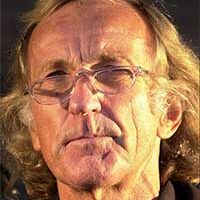
In 1935, the American Writers’ Congress was held in New York City, followed by another two years later. Delegates to the meetings called on “the hundreds of poets, novelists, dramatists, critics, short story writers, and journalists” to discuss the “rapid crumbling of capitalism” and the beckoning of another war.
They were electric events which, according to one account, were attended by 3,500 members of the public with more than 1,000 turned away.
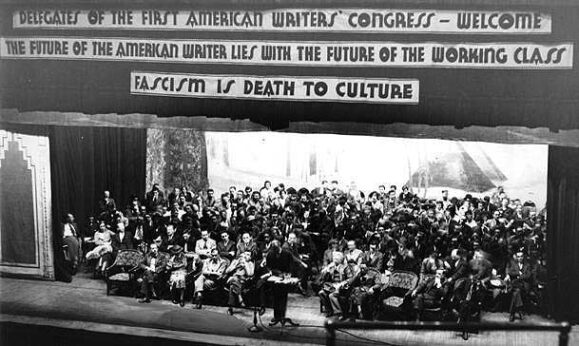
Arthur Miller, Myra Page, Lillian Hellman, and Dashiell Hammett warned that fascism was rising, often disguised, and the responsibility lay with writers and journalists to speak out. Telegrams of support from Thomas Mann, John Steinbeck, Ernest Hemingway, C. Day Lewis, Upton Sinclair, and Albert Einstein were read out.
The journalist and novelist Martha Gellhorn spoke up for the homeless and unemployed and “all of us under the shadow of violent great power.” Martha, who became a close friend, told me later over her customary glass of Famous Grouse and soda: “The responsibility I felt as a journalist was immense. I had witnessed the injustices and suffering delivered by the Depression, and I knew, we all knew, what was coming if silences were not broken.”
Her words echo across the silences today: They are silences filled with a consensus of propaganda that contaminates almost everything we read, see, and hear. Let me give you one example.
On March 7, the two oldest newspapers in Australia, the Sydney Morning Herald and The Age, published several pages on “the looming threat” of China. They colored the Pacific Ocean red. Chinese eyes were martial, on the march, and menacing. The Yellow Peril was about to fall down as if by the weight of gravity.
No logical reason was given for an attack on Australia by China. A “panel of experts” presented no credible evidence: One of them is a former director of the Australian Strategic Policy Institute, a front for the Defence Department in Canberra, the Pentagon in Washington, the governments of Britain, Japan, and Taiwan, and the West’s war industry.
“Beijing could strike within three years,” they warned. “We are not ready.” Billions of dollars are to be spent on U.S. nuclear submarines, but that, it seems, is not enough. “Australia’s holiday from history is over,” they declared, whatever that might mean.
There is no threat to Australia, none. The faraway “lucky” country has no enemies, least of all China, its largest trading partner. Yet China-bashing that draws on Australia’s long history of racism towards Asia has become something of a sport for the self-ordained “experts.” What do Chinese-Australians make of this? Many are confused and fearful.
The authors of this grotesque piece of dog-whistling and obsequiousness to U.S. power are Peter Hartcher and Matthew Knott, “national security reporters” I think they are called. I remember Hartcher from his Israeli government-paid jaunts. The other one, Knott, is a mouthpiece for the suits in Canberra. Neither has ever seen a war zone and its extremes of human degradation and suffering.
Few dare to dissent
“How did it come to this?” Martha Gellhorn would say if she were here. “Where on Earth are the voices saying no? Where is the comradeship?”
The voices are heard in the samizdat of this website and others. In literature, the likes of John Steinbeck, Carson McCullers, and George Orwell, are obsolete.
Post-modernism is in charge now. Liberalism has pulled up its political ladder. A once somnolent social democracy, Australia, has enacted a web of new laws protecting secretive, authoritarian power and preventing the right to know.
Whistleblowers are outlaws, to be tried in secret. An especially sinister law bans “foreign interference” by those who work for foreign companies. What does this mean?
Democracy is notional now; there is the all-powerful elite of the corporation merged with the state and the demands of “identity.” U.S. admirals are paid thousands of dollars a day by the Australian taxpayer for “advice.” Right across the West, our political imagination has been pacified by PR and distracted by the intrigues of corrupt, ultra-low-rent politicians.
No writers’ congress in 2023 worries about “crumbling capitalism” and the lethal provocations of “our” leaders. The most infamous of these, Blair, a prima facie criminal under the Nuremberg Standard, is free and rich. Julian Assange, who dared journalists to prove their readers had a right to know, is in his second decade of incarceration.
The rise of fascism in Europe is uncontroversial. Or “neo-Nazism” or “extreme nationalism,” as you prefer.
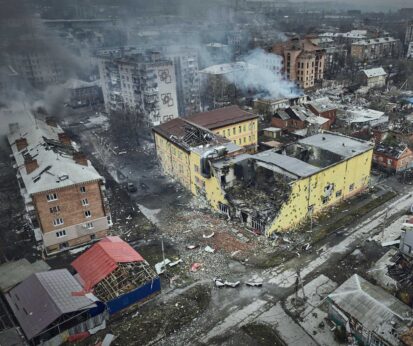
Ukraine, as modern Europe’s fascist beehive, has seen the re-emergence of the cult of Stepan Bandera, the passionate anti-Semite and mass murderer who lauded Hitler’s “Jewish policy,” which left 1.5 million Ukrainian Jews slaughtered. “We will lay your heads at Hitler’s feet,” a Banderist pamphlet proclaimed to Ukrainian Jews.
Today, Bandera is hero-worshipped in western Ukraine, and scores of statues of him and his fellow fascists have been paid for by the E.U. and the U.S., replacing those of Soviet cultural giants and others who liberated Ukraine from the original Nazis.
In 2014, neo-Nazis played a key role in a U.S.-bankrolled coup against the elected president, Viktor Yanukovych, who was accused of being “pro-Moscow.” The coup regime included prominent “extreme nationalists”—Nazis in all but name.
At first, this was reported at length by the BBC and the European and U.S. media. In 2019, Time magazine featured the “white supremacist militias” active in Ukraine. NBC News reported, “Ukraine’s Nazi problem is real.” The immolation of trade unionists in Odessa was filmed and documented.
Spearheaded by the Azov regiment, whose insignia, the “Wolfsangel,” was made infamous by the German SS, Ukraine’s military invaded the eastern, Russian-speaking Donbas region. According to the United Nations, 14,000 in the east were killed. Seven years later, with the Minsk peace conferences sabotaged by the West, as Angela Merkel confessed, the Russian Army invaded.
This version of events was not reported in the West. To even utter it is to bring down abuse about being a “Putin apologist,” regardless of whether the writer (such as myself) has condemned the Russian invasion. Understanding the extreme provocation that a NATO-armed borderland, Ukraine, the same borderland through which Hitler invaded, presented to Moscow, is anathema.
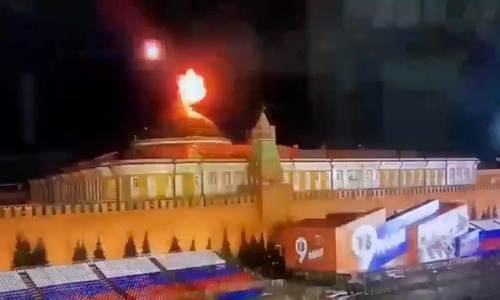
Journalists who traveled to the Donbas were silenced or even hounded in their own countries. German journalist Patrik Baab lost his job, and a young German freelance reporter, Alina Lipp, had her bank account sequestered.
In Britain, the silence of the liberal intelligentsia is the silence of intimidation. State-sponsored issues like Ukraine and Israel are to be avoided if you want to keep a campus job or a teaching tenure.
What happened to Labour Party leader Jeremy Corbyn in 2019 is repeated on campuses where opponents of apartheid Israel are casually smeared as anti-Semitic.
Professor David Miller, ironically the country’s leading authority on modern propaganda, was sacked by Bristol University for suggesting publicly that Israel’s “assets” in Britain and its political lobbying exerted a disproportionate influence worldwide—a fact for which the evidence is voluminous.
The university hired a leading QC to investigate the case independently. His report exonerated Miller on the “important issue of academic freedom of expression” and found “Professor Miller’s comments did not constitute unlawful speech.” Yet Bristol fired him.
The message is clear: No matter what outrage it perpetrates, the government of Israel has immunity, and its critics are to be punished.
A few years ago, Terry Eagleton, then professor of English literature at Manchester University, reckoned that “for the first time in two centuries, there is no eminent British poet, playwright, or novelist prepared to question the foundations of the Western way of life.”
No Shelley to speak for the poor, no Blake for utopian dreams, no Byron to damn the corruption of the ruling class, no Thomas Carlyle and John Ruskin to reveal the moral disaster of capitalism. William Morris, Oscar Wilde, H.G. Wells, and George Bernard Shaw had no equivalents today. Harold Pinter was alive then, “the last to raise his voice,” wrote Eagleton.
The end of politics
Where did post-modernism—the rejection of actual politics and authentic dissent—come from?
The publication in 1970 of Charles Reich’s bestselling book, The Greening of America, offers a clue. The U.S. then was in a state of upheaval. Nixon was in the White House; a civil resistance, known as “the movement,” had burst out of the margins of society in the midst of a war that touched almost everybody.
In alliance with the Civil Rights Movement, it presented the most serious challenge to Washington’s power for a century. On the cover of Reich’s book were these words: “There is a revolution coming. It will not be like revolutions of the past. It will originate with the individual.”
At the time, I was a correspondent in the United States and recall the overnight elevation to guru status of Reich, a young Yale academic. The New Yorker had sensationally serialized his book, whose message was that the “political action and truth-telling” of the 1960s had failed and only “culture and introspection” would change the world. It felt as if hippydom was claiming the consumer classes. And in one sense it was.
Within a few years, the cult of “me-ism” had all but overwhelmed many people’s sense of acting together, of social justice and internationalism. Class, gender, and race were separated. The personal was the political, and the media was the message. Make money, it said.
As for “the movement,” its hope and songs, the years of Ronald Reagan and Bill Clinton put an end to all that. The police were now in open war with Black people; Clinton’s notorious “welfare reform” bills broke world records in the number of mostly Black Americans they sent to jail.
When 9/11 happened, the fabrication of new “threats” on “America’s frontier” (as the Project for a New American Century called the world) completed the political disorientation of those who, 20 years earlier, would have formed a vehement opposition.
In the years since, the U.S. has gone to war with the world. According to a largely ignored report by the Physicians for Social Responsibility, Physicians for Global Survival, and the Nobel Prize-winning International Physicians for the Prevention of Nuclear War, the number killed in the U.S.’ “war on terror” was “at least” 1.3 million in Afghanistan, Iraq, and Pakistan.
This figure does not include the deaths of U.S.-led and fuelled wars in Yemen, Libya, Syria, Somalia, and beyond.
The true figure, said the report, “could well be in excess of two million [or] approximately 10 times greater than that of which the public, experts, and decision-makers are aware and [is] propagated by the media and major NGOs.”
“At least” one million were killed in Iraq, say the physicians, or 5% of the population.
The enormity of this violence and suffering seems to have no place in the Western consciousness. “No one knows how many” is the media refrain. Blair and George W. Bush—and Straw and Cheney and Powell and Rumsfeld et al—were never in danger of prosecution. Blair’s propaganda maestro, Alastair Campbell, is celebrated as a “media personality.”
War by media
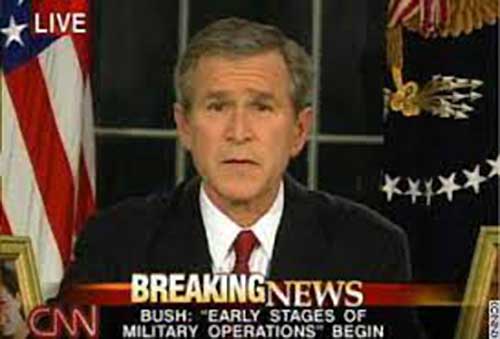
In 2003, I filmed an interview in Washington with Charles Lewis, the acclaimed investigative journalist. We discussed the invasion of Iraq a few months earlier. I asked him: “What if the constitutionally freest media in the world had seriously challenged George W. Bush and Donald Rumsfeld and investigated their claims, instead of spreading what turned out to be crude propaganda?”
He replied: “If we journalists had done our job, there is a very, very good chance we would have not gone to war in Iraq.”
I put the same question to Dan Rather, the famous CBS anchor, who gave me the same answer. David Rose of The Observer, who had promoted Saddam Hussein’s “threat,” and Rageh Omaar, then the BBC’s Iraq correspondent, gave me the same answer. Rose’s admirable contrition at having been “duped” spoke for many reporters bereft of his courage to say so.
Their point is worth repeating. Had journalists done their job, had they questioned and investigated the propaganda instead of amplifying it, a million Iraqi men, women, and children might be alive today; millions might not have fled their homes; the sectarian war between Sunni and Shia might not have ignited; and Islamic State might not have existed.
Cast that truth across the rapacious wars since 1945 ignited by the United States and its “allies” and the conclusion is breathtaking. Is this ever raised in journalism schools?
Today, war by media is a key task of so-called mainstream journalism, reminiscent of that described by a Nuremberg prosecutor in 1945: “Before each major aggression, with some few exceptions based on expediency, they initiated a press campaign calculated to weaken their victims and to prepare the German people psychologically … In the propaganda system … it was the daily press and the radio that were the most important weapons.”
Invading the world
One of the persistent strands in U.S. political life is a cultish extremism that approaches fascism. Although Trump was credited with this, it was during Obama’s two terms that U.S. foreign policy flirted seriously with fascism. This was almost never reported.
“I believe in American exceptionalism with every fiber of my being,” said Obama, who expanded a favorite presidential pastime, bombing and death squads known as “special operations,” as no other president had done since the first Cold War.
According to a Council on Foreign Relations survey, in 2016 Obama dropped 26,171 bombs. That is 72 bombs every day. He bombed the poorest people and people of color: in Afghanistan, Libya, Yemen, Somalia, Syria, Iraq, and Pakistan.
Every Tuesday—reported the New York Times—he personally selected those who would be murdered by hellfire missiles fired from drones. Weddings, funerals, shepherds were attacked, along with those attempting to collect the body parts festooning the “terrorist target.”
A leading Republican senator, Lindsey Graham, estimated, approvingly, that Obama’s drones had killed 4,700 people. “Sometimes you hit innocent people, and I hate that,” he said, but we’ve taken out some very senior members of al-Qaida.”
In 2011, Obama told the media that Libyan President Muammar Gadhafi was planning “genocide” against his own people. “We knew,” he said, “that if we waited one more day, Benghazi, a city the size of Charlotte [North Carolina], could suffer a massacre that would have reverberated across the region and stained the conscience of the world.”
This was a lie. The only “threat” was the coming defeat of fanatical Islamists by Libyan government forces. With his plans for a revival of independent pan-Africanism, an African bank and African currency, all of it funded by Libyan oil, Gadhafi was cast as an enemy of Western colonialism on the continent in which Libya was the second-most modern state.
Destroying Gadhafi’s “threat” and his modern state was the aim. Backed by the U.S., Britain, and France, NATO launched 9,700 sorties against Libya. A third were aimed at infrastructure and civilian targets, reported the UN.
Uranium warheads were used; the cities of Misurata and Sirte were carpet-bombed. The Red Cross identified mass graves, and UNICEF reported that “most [of the children killed] were under the age of 10.”
When Hillary Clinton, Obama’s secretary of state, was told that Gadhafi had been captured by the insurrectionists and sodomized with a knife, she laughed and said to the camera: “We came, we saw, he died!”
On Sept. 14, 2016, the House of Commons foreign affairs committee in London reported the conclusion of a year-long study into the NATO attack on Libya, which it described as an “array of lies”—including the Benghazi massacre story.
The NATO bombing plunged Libya into a humanitarian disaster, killing thousands of people and displacing hundreds of thousands more, transforming Libya from the African country with the highest standard of living into a war-torn failed state.
Under Obama, the U.S. extended secret “special forces” operations to 138 countries, or 70% of the world’s population. The first African-American president launched what amounted to a full-scale invasion of Africa.
Reminiscent of the Scramble for Africa in the 19th century, the U.S. African Command (AFRICOM) has since built a network of supplicants among collaborative African regimes eager for U.S. bribes and armaments. AFRICOM’s “soldier to soldier” doctrine embeds U.S. officers at every level of command from general to warrant officer. Only pith helmets are missing.
It is as if Africa’s proud history of liberation, from Patrice Lumumba to Nelson Mandela, has been consigned to oblivion by a new white master’s Black colonial elite. This elite’s “historic mission,” warned the knowing Frantz Fanon, is the promotion of “a capitalism rampant though camouflaged.”
Turning east
In the year NATO invaded Libya, 2011, Obama announced what became known as the “pivot to Asia.” Almost two-thirds of U.S. naval forces would be transferred to the Asia-Pacific to “confront the threat from China,” in the words of his defense secretary.
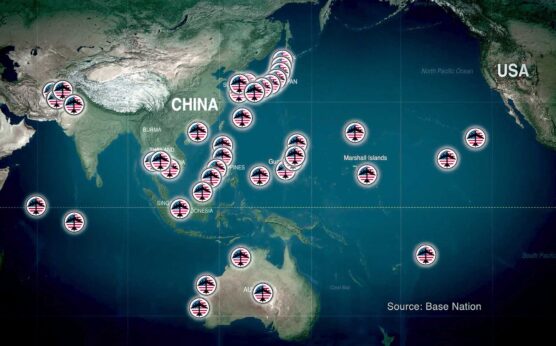
There was no threat from China; in reality, there was a threat to China from the United States. Some 400 U.S. military bases formed an arc along the rim of China’s industrial heartlands, which a Pentagon official described approvingly as a “noose.”
At the same time, Obama placed missiles in eastern Europe aimed at Russia. It was the beatified recipient of the Nobel Peace Prize who increased spending on nuclear warheads to a level higher than that of any U.S. administration since the Cold War—having promised, in an emotional speech in the center of Prague in 2009, to “help rid the world of nuclear weapons.”
Obama and his administration knew full well that the coup his Assistant Secretary of State Victoria Nuland was sent to oversee against the government of Ukraine in 2014 would provoke a Russian response and probably lead to war. And so it has.
I am writing this on April 30, the anniversary of the last day of the longest war of the 20th century, in Vietnam, which I reported. I was very young when I arrived in Saigon, and I learned a great deal. I learned to recognize the distinctive drone of the engines of giant B-52s, which dropped their carnage from above the clouds and spared nothing and no one; I learned not to turn away when faced with a charred tree festooned with human parts; I learned to value kindness as never before; I learned that Joseph Heller was right in his masterly Catch-22: that war was not suited to sane people; and I learned about “our” propaganda.
All through that war, the propaganda said a victorious Vietnam would spread its communist disease to the rest of Asia, allowing the Great Yellow Peril to its north to sweep down. Countries would fall like “dominoes.”
Ho Chi Minh’s Vietnam was victorious, and none of the above happened. Instead, Vietnamese civilization blossomed, remarkably, in spite of the price they paid: three million dead. The maimed, the deformed, the addicted, the poisoned, the lost.
If the current propagandists get their war with China, this will be a fraction of what is to come. Speak up.
As with all op-eds published by People’s World, this article reflects the opinions of its author.
We hope you appreciated this article. At People’s World, we believe news and information should be free and accessible to all, but we need your help. Our journalism is free of corporate influence and paywalls because we are totally reader-supported. Only you, our readers and supporters, make this possible. If you enjoy reading People’s World and the stories we bring you, please support our work by donating or becoming a monthly sustainer today. Thank you!


